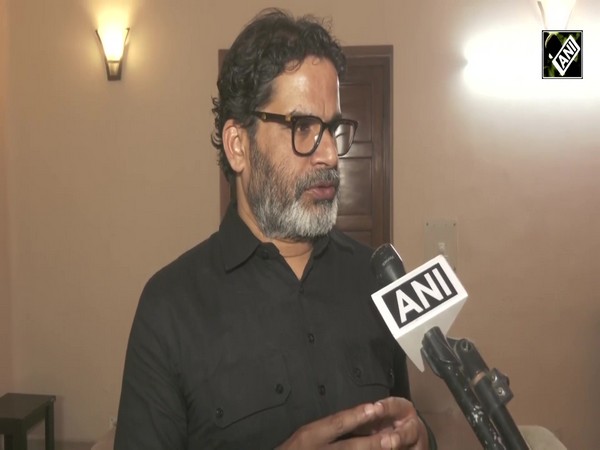Women farmers behind millet renaissance to share expertise with G20 leaders’ spouses
Sep 06, 2023

New Delhi [India] September 6 : More than 20 women farmers from remote villages will share their experiences and wisdom about millet farming with the spouses of G20 leaders during their visit to the Indian Agriculture Research Institute.
These women are at the forefront of a movement to revolutionise millet cultivation in their respective regions.
They have been invited by the central government to share their knowledge about millets during a tour organised for the first ladies and spouses of the G20 leaders at the 1,200-acre Pusa-IARI campus on September 9.
“The spouses will interact with 22 enterprising women farmers from 11 millet-producing states, who are bringing about a millet renaissance in their respective milieu,” an official at the Agriculture Ministry told ANI.
The women farmers have been invited from far-flung villages in 11 millet-producing states — Rajasthan, Maharashtra, Karnataka, Uttar Pradesh, Madhya Pradesh, Tamil Nadu, Uttarakhand, Odisha, Chhattisgarh, Bihar and Assam.
“The women are leading the movement to revolutionise millet production in the country on the back of robust millet missions and millet projects in their states,” the official said.
L Mareeswari from rural Tamil Nadu is a farmer, entrepreneur, trainer and community leader all rolled into one. Her desire to work for the betterment of her peers prompted her to form a Farmers' Interest Group with 20 like-minded women.
“We started out by cleaning pulses by weight for a local factory. We used our earnings to set up a small processing unit, which now produces everything — from millet flours to dosa mixes,“ she said.
Subasa Mohanta, a distressed paddy farmer from Odisha struggling with successive crop failures, turned her life around by embracing finger millet cultivation and became famous as the Mandia Maa (Finger Millet Mother) of the Mayurbhanj district.
Raimati Ghuiria, her spiritual compatriot from Koraput’s tribal pockets, made it her mission to conserve 70+ varieties of traditional millets growing in Odisha and is now relied upon by the state government for authentic millet landraces.
Equally exemplary is Lahri Bai’s journey of establishing an informal seed bank using earthen pots, in her two-room mud hut deep inside the forests of Madhya Pradesh’s Dindori district.
A 27-year-old woman from the Baiga tribal community has been conserving more than 150 varieties of seeds, including about 50 varieties of millet seeds, rightfully earning herself the epithet of ‘Millet Queen of India’. Her efforts in this direction drew praise from none other than Prime Minister Narendra Modi.
India has been spearheading the movement to highlight millets, adopting a resolution to declare 2023 as the International Year of Millets (IYM), which was supported by 72 members of the United Nations General Assembly.
“IYM has opened up several avenues for India to celebrate millets in all their eclectic glory over the past 8 months, showcasing their merits and the stories of those who are shaping their revival in the country,” the official said.
The International Year of Millets has encouraged states like Uttarakhand, Madhya Pradesh, Bihar and Maharashtra to launch their millet missions this year.
The women farmers invited for the exhibition are emblematic of the change at the grassroots level, the official added.
Millets thrive with minimal intervention, even in traditionally water-scarce regions, from arid patches to steep hill slopes. With no dependency on large-scale irrigation and chemical inputs, millets are the ideal choice for climate-smart farming interventions. Loaded with nutritional value, millets are a rich source of protein, fibre and energy, and have been an intrinsic part of most regional cuisines in India.
While closely entwined with India’s culinary heritage and dietary mores, millets were relegated to the sidelines in the aftermath of the highly successful green revolution, executed in the mid-1960s, which solved India’s food scarcity crisis but relied excessively on water-intensive crops like wheat and rice.
The International Year of Millets initiative, along with the various state millet missions, are aimed at bringing millets back to India’s dietary mainstream and women farmers are at the forefront of the mission to bring this vision to fruition.
These women farmers, some of whom are tribal homemakers and university graduates with successful careers behind them, are not merely growing millets but mobilising community members to harness their socio-economic potential. Each of their stories is an inspiring narrative of resilience and innovation.
“These women farmers from across the country will be sharing their experience and wisdom in millet farming with the spouses of the G20 heads of state during their visit to India,” the official said.
“Together they are bringing an Indian millet revolution to life, steadily making small but effective changes in the way the country grows and consumes food grains. Together they are ushering in an era of conscious consumption and sustainable nutrition,” the official added.
Several world leaders, including US President Joe Biden, have confirmed his presence at the G20 Summit.
Canadian Prime Minister Justin Trudeau, Indonesian President Joko Widodo, Saudi Arabia's Crown Prince Mohammed bin Salman and Brazilian President Luiz Inacio Lula da Silva are also among the G20 leaders, who have confirmed their participation at the summit.
The Group of Twenty (G20) comprises 19 countries — Argentina, Australia, Brazil, Canada, China, France, Germany, India, Indonesia, Italy, Japan, Republic of Korea, Mexico, Russia, Saudi Arabia, South Africa, Türkiye, United Kingdom and the United States and the European Union.
The G20 members represent around 85 per cent of the global GDP, over 75 per cent of the global trade, and about two-thirds of the world population.




















